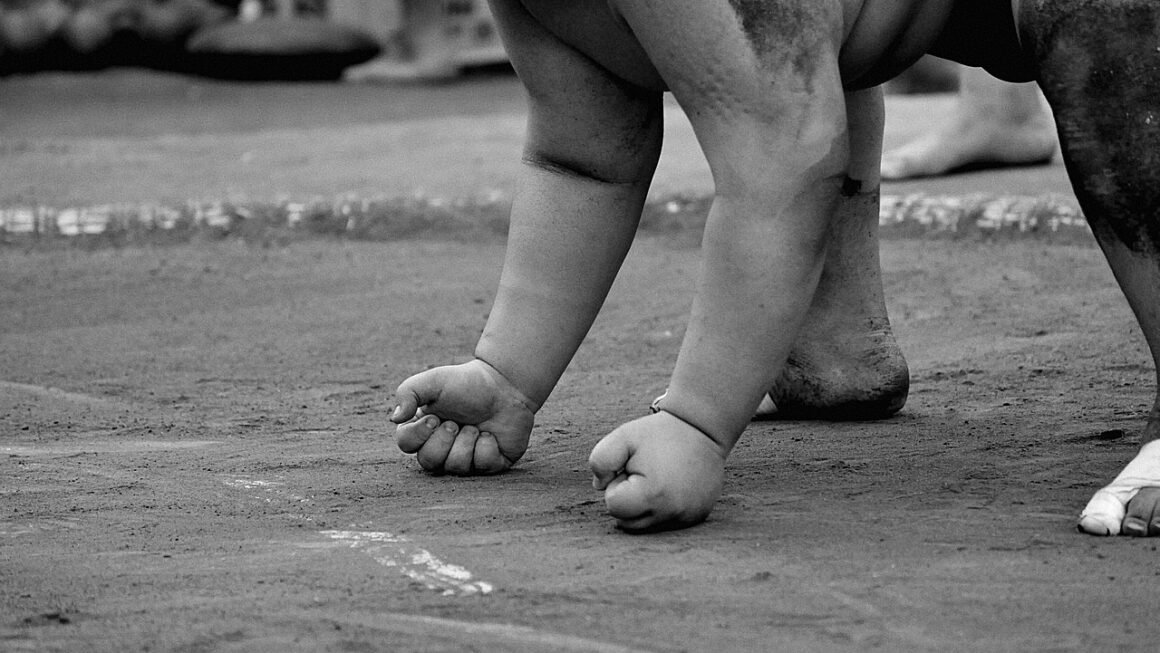Kickboxing isn’t just about throwing punches and kicks; it’s a dynamic, full-body workout that builds strength, improves cardiovascular health, and boosts confidence. Whether you’re looking to get in shape, learn self-defense, or simply relieve stress, kickboxing offers a challenging and rewarding experience. This comprehensive guide will explore the various aspects of kickboxing, from its history and styles to its benefits and practical tips for getting started.
What is Kickboxing?
A Brief History
Kickboxing is a martial art and combat sport that combines punching techniques from boxing with kicking techniques drawn from various martial arts. Its origins can be traced back to several countries and styles. Some believe it evolved independently in multiple locations, including Thailand (Muay Thai), Japan, and the United States.
- Muay Thai, often referred to as “the art of eight limbs,” is considered a foundation of many kickboxing styles.
- Japanese kickboxing emerged in the 1960s, blending karate with Muay Thai principles.
- American kickboxing developed in the 1970s, focusing on punches and kicks above the waist.
Common Kickboxing Styles
While the fundamental principles remain the same, different kickboxing styles emphasize different techniques and rules. Here are a few popular styles:
- Muay Thai: Known for its use of elbows, knees, and clinching, making it a highly effective and brutal art.
- Japanese Kickboxing: Features a blend of karate and Muay Thai, often incorporating low kicks and punches.
- American Kickboxing: Typically restricts strikes to above the waist, emphasizing speed and agility.
- Dutch Kickboxing: Characterized by its aggressive combinations and powerful low kicks, influenced by Kyokushin Karate.
Distinguishing Kickboxing from Other Martial Arts
While kickboxing shares similarities with other martial arts, several key differences set it apart:
- Focus: Kickboxing primarily focuses on striking techniques, using punches and kicks. Grappling and ground fighting are generally not permitted (except in some hybrid styles).
- Rules: The rules vary depending on the style and organization. Some allow knees and elbows, while others restrict strikes to specific target areas.
- Purpose: Kickboxing is often practiced for fitness, self-defense, and competitive fighting, offering a versatile training regimen.
The Health Benefits of Kickboxing
Physical Benefits
Kickboxing offers a multitude of physical benefits, making it an excellent choice for overall fitness:
- Cardiovascular Health: The high-intensity nature of kickboxing workouts significantly improves cardiovascular endurance.
- Strength and Conditioning: Kickboxing engages muscles throughout the entire body, building strength and improving muscle tone.
- Weight Loss: The calorie-burning potential of kickboxing makes it an effective tool for weight loss and management. A typical one-hour class can burn between 600 and 900 calories, depending on the intensity.
- Improved Coordination and Balance: The dynamic movements involved in kickboxing enhance coordination, balance, and agility.
Mental and Emotional Benefits
Beyond the physical advantages, kickboxing also provides significant mental and emotional benefits:
- Stress Relief: Hitting a heavy bag can be a powerful way to release pent-up stress and frustration.
- Improved Focus and Concentration: Kickboxing requires focus and concentration, helping to improve mental clarity and cognitive function.
- Increased Confidence: Mastering new techniques and improving physical fitness can boost self-esteem and confidence.
- Discipline and Self-Control: Kickboxing training instills discipline and self-control, which can translate to other areas of life.
Kickboxing vs. Traditional Workouts
While traditional workouts like running or weightlifting offer numerous benefits, kickboxing provides a unique and engaging alternative:
- Boredom Factor: Kickboxing is a dynamic and varied workout, reducing the likelihood of boredom compared to repetitive exercises.
- Full-Body Engagement: Kickboxing engages more muscle groups simultaneously than many traditional workouts, leading to more comprehensive fitness improvements.
- Practical Skills: Kickboxing teaches self-defense skills, providing a practical application for your fitness training.
Getting Started with Kickboxing
Finding a Reputable Gym or Instructor
Choosing the right gym or instructor is crucial for a positive and safe kickboxing experience. Consider the following factors:
- Instructor Qualifications: Look for instructors with certifications and extensive experience in kickboxing or related martial arts.
- Gym Atmosphere: Visit different gyms and observe the training environment. Choose a gym that fosters a supportive and encouraging atmosphere.
- Class Structure: Ensure that the classes are structured to accommodate different skill levels, from beginners to advanced practitioners.
- Safety Measures: Confirm that the gym prioritizes safety, with proper equipment and qualified instructors who emphasize technique and injury prevention.
Essential Equipment
Investing in the right equipment is essential for protecting yourself and maximizing your training:
- Hand Wraps: These protect your hands and wrists from impact. They are a must-have!
- Boxing Gloves: Choose gloves that fit snugly and provide adequate padding. 12-16oz gloves are commonly used for training.
- Shin Guards: Protect your shins during sparring and kicking drills.
- Mouthguard: Essential for protecting your teeth during sparring.
- Optional Gear: Headgear, groin protection, and chest protectors can provide additional safety during sparring.
Basic Techniques for Beginners
Before jumping into advanced techniques, mastering the basics is crucial:
- Stance: A stable and balanced stance is the foundation of all kickboxing techniques.
- Punches: Learn the fundamental punches: jab, cross, hook, and uppercut. Focus on proper form and technique.
- Kicks: Master the basic kicks: front kick, roundhouse kick, and side kick. Practice flexibility and control.
- Footwork: Develop agility and mobility through footwork drills, including shuffling, pivoting, and lateral movement.
Kickboxing Training Tips and Techniques
Warming Up and Cooling Down
Proper warm-up and cool-down routines are essential for preventing injuries and maximizing performance:
- Warm-Up: Include dynamic stretches, light cardio (e.g., jogging, jumping jacks), and shadow boxing to prepare your muscles for training. Aim for a 10-15 minute warm-up.
- Cool-Down: Perform static stretches, holding each stretch for 20-30 seconds. Focus on major muscle groups, such as legs, arms, and core. Aim for a 10-15 minute cool-down.
Mastering Punching and Kicking Techniques
Refining your punching and kicking techniques is an ongoing process:
- Punching: Focus on proper form, generating power from your core and legs. Practice punching combinations on a heavy bag or focus mitts.
- Kicking: Improve flexibility and range of motion through regular stretching. Practice kicking drills, focusing on accuracy and power.
- Combinations: Combine punches and kicks into fluid and effective combinations. Experiment with different combinations and find what works best for you. For example, a basic combination could be Jab-Cross-Roundhouse kick.
Sparring and Partner Drills
Sparring and partner drills are essential for developing practical skills and applying your techniques in a realistic setting:
- Controlled Sparring: Start with light sparring, focusing on technique and control rather than power. Gradually increase intensity as your skills improve.
- Focus Mitt Drills: Work with a partner using focus mitts to improve your punching accuracy, speed, and combinations.
- Pad Work: Practice kicking techniques on pads held by a partner, focusing on power and precision.
Kickboxing for Self-Defense
Practical Self-Defense Techniques
Kickboxing provides valuable self-defense skills, equipping you with the tools to protect yourself in potentially dangerous situations:
- Striking Techniques: Utilize punches and kicks to create distance and defend against attacks. Focus on targeting vulnerable areas, such as the head, body, and legs.
- Footwork and Evasion: Use footwork to maintain distance and evade attacks. Practice moving laterally and backward to create space.
- Awareness and Prevention: Be aware of your surroundings and avoid potentially dangerous situations. Trust your instincts and take appropriate action to protect yourself.
Situational Awareness and Risk Assessment
Self-defense is not just about physical techniques; it also involves situational awareness and risk assessment:
- Be Observant: Pay attention to your surroundings and identify potential threats.
- Avoid Confrontation: If possible, avoid confrontation by de-escalating the situation or removing yourself from the area.
- Trust Your Instincts: If you feel uncomfortable or unsafe, trust your instincts and take appropriate action.
Legal Considerations
Understanding the legal aspects of self-defense is crucial:
- Reasonable Force: Use only the amount of force that is reasonably necessary to defend yourself.
- Proportionality: The force you use should be proportional to the threat you are facing.
- Local Laws: Be familiar with the self-defense laws in your area.
Conclusion
Kickboxing is more than just a workout; it’s a comprehensive training system that offers a wide range of physical, mental, and self-defense benefits. Whether you’re looking to improve your fitness, learn practical self-defense skills, or simply challenge yourself, kickboxing provides a rewarding and empowering experience. By finding a reputable gym, investing in the right equipment, and mastering the basic techniques, you can embark on a journey of self-improvement and personal growth through the art of kickboxing. So, lace up your gloves, step into the ring, and discover the power within you.



